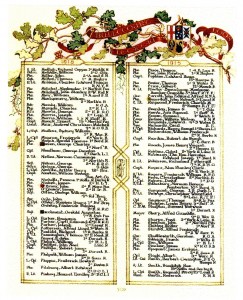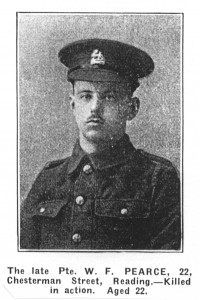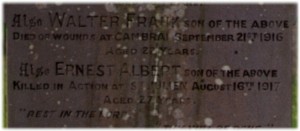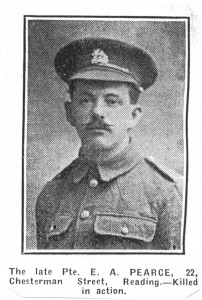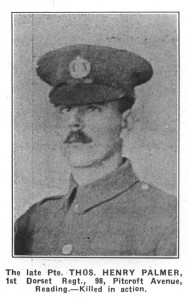Richard Penford
Corporal 7495
1st Batt. Royal Berkshire Regt.
Division 34
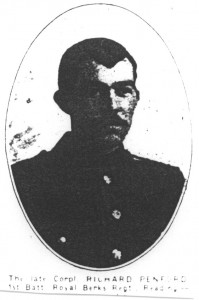 |
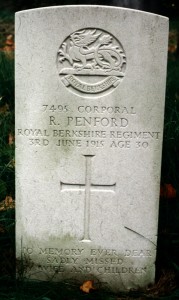 |
Corporal Richard Penford was the son of George and Mary Penford. He had emigrated to Canada where he had a wife, Mary, and two children. They lived at 196A, Gowan Avenue, Todmorden, Toronto. He was in the “reserve” and at the onset of WW1 he returned to Britain when “called up”. His CWGC headstone states “Missed by wife and children”. The Standard 12June 1915 reports:
Penford Military Funeral
Hero of 1st Berks. Charge at Festubert
“previously wounded in the head in March 1915, he had spent a month at the Base. Corporal Penfold on returning to the front fought at Festubert on May 16th, where he received the injury which proved fatal. He and his comrades had taken one line of German trenches and were taking the second when shrapnel caught him in the groin. He died at Sheffield Royal Hospital on 3rd June. Full military honours were accorded at the funeral. His widow and young two children were unable to attend his funeral being in Canada at the time but several other family members were in attendance, there were beautiful floral tributes.”
Like most of the Canadians buried in the Reading Cemetery, Corporal Penford, has had his name recorded in the “Books of Remembrance”. It is to be found in the Addendum to the 1915 B.E.F. entries.
